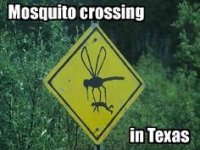HI dave1949:
Yes and No. Why? Read on, if you dare:
I was once involved heavil, as an agent of the Federal Gov't, with an organization in Canada called Sprayers Of Dioxin. Their brief was to extort money from the Gov't for supposed damages from the use of Agent Orange in vast tracts of land, public and private for exposure to high leverls of Dioxin, which they claimed were caused by exposure to Dioxin along the railraods, power lines and military artillery ranges in new Brunswick. The chiref proponents were, you guessed it, Tort Lawyers aqnd members of the executive of the SODA protestors. It was an obscene arrangement which, had it been successful would have raked off 75% of all of the damages awarded. They were not successful for several reasons:
1. there were no effects in the group of people claiming damages, even after twenty-five years, and ;
2. Ogent Orange (as used in Vietnam) was a herbicide called 2-4, D ( round-up) mfrd by Dow chemical.
There are two forms : 2, 4, 5,-D 1sobutyl Dioxin,which has butyl Dioxin, which is fat soluble in the human body, and the other was 2,4 D Isopropyl Dioxin, which is water soluble in the human body.
This is a key differentiation 2,4,5 -D Isobutyl Dioxin ACCUMULATES addidtively IN THE TISSUES, whereasas 2,4- D Isopropyl Dioxin does not accumulate additively. The SODA proponents lost in court and went bankrupt as result.
Differentiating between the solutes of toxins is difficult after they have been metabolised (Chelated) in the biological process is very difficult, if not impossible, by normal lab procedures, because both form identical chelates through the metabolic process. The only real test involves tissue analysis post-mortem or biopsy.
Because of this differention, no ill effects to SODA proponents could be shown and their case was dismissed.
Because of a production overlap between the two types, all 2,4-D and 2,4, 5 -Dioxin was banned in Canada, except for licenced professional users. It is not available here in stores in any form. Licensed sprayer may use 2,4,5-D in carefully mixed and applied dosage rates. Now we are knee deep in weeds in our lawns FWIW , all DIOXIN is a hormone effective toxin
The reason I relate all this is because other available insecticides are differentiated to be water soluable without additive properties, but their trace elements are not differentiated in this way, as for 2,4-D and 2,4,5-D dioxin, as to cumulative effects, so measuring the trace amounts on vegetables is a crude indicator only that it was used. It does not identify the isotopes in the chelated form, but no matter. All fat soluble insecticide is bannnd in Canada. None of them are therefore additive toxins. That does not mean that they are harmless, NO, it means that they are not additive over time. Cumulative dosages do play a part in toxicity, but only if successive dosages are taken relatively rapidly, which is to say, faster than the body can expel then by normal bodily processes. (24 hrs usually.) There are exceptions in certain classes of toxins, but these do not include accepted insecticides. Crop sprayers et al must try to prevent frequent exposures to toxins considered non-cumulative, however, because of the frequency of potential exposure.
Malathion is now illegal for use in Canada
for that reason While not additive, it is very persistent in the body because of the way that it chemically binds(chelates) to normal body fats. And it is also very toxic. Ditto, DDT
There now, Dave. You must decide if I am pulling your leg or not. Have at it and report back to me in not more than three days...and show your work. Extra points for neatness, of course:drink:
This is just such fun, ain't it?
Jix

